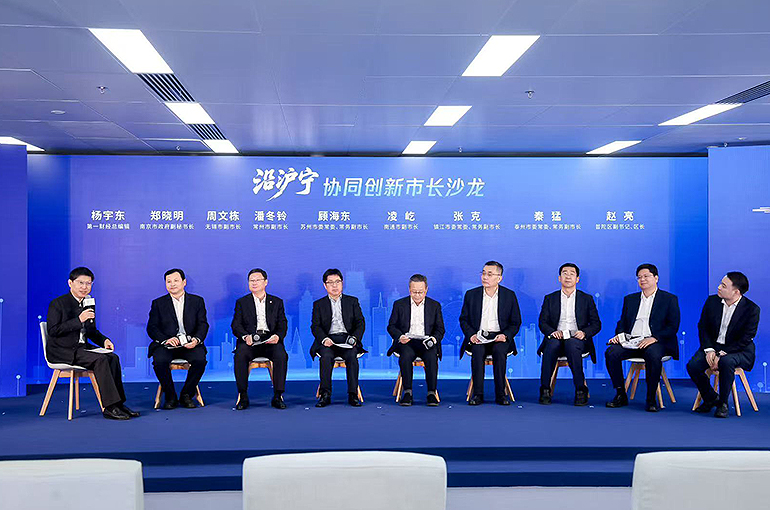Select Language:
Leaders from the nine cities along the Shanghai-Nanjing Industrial Innovation Belt in the Yangtze River Delta region gathered on World Cities Day to discuss regional cooperation in technology and industry, as well as other trending topics.
In terms of industrial innovation, cities like Nanjing and Shanghai have many areas ripe for collaboration, including information and communication technology, biomedicine, artificial intelligence, robotics, smart grids, the low-altitude economy, commercial aerospace, and large aircraft manufacturing. Zheng Xiaoming, deputy secretary-general of the Nanjing municipal government, highlighted these opportunities during an event in Shanghai on October 26.
The Shanghai-Nanjing Industrial Innovation Belt, which includes Changzhou, Nanjing, Nantong, Shanghai, Suzhou, Taizhou, Wuxi, Yangzhou, and Zhenjiang, stands out as one of China’s most dynamic, open, and innovative regions. Last year, its gross domestic product hit CNY15.9 trillion (approximately USD2.24 trillion), representing about 12% of the country’s total and nearly half of the Yangtze River Delta region’s output. The area hosts numerous high-tech companies, renowned national laboratories, and publicly listed tech firms.
Fostering joint technical and industrial innovation within this belt involves focusing on intelligent manufacturing, enhancing supply chain integration, and capitalizing on regional advantages, stated Pan Dongling, vice mayor of Changzhou. Strengthening supply chain collaboration is crucial for building a robust regional industrial ecosystem and developing a globally influential technological commercialization corridor.
Ling Yi, vice mayor of Nantong, and Zhang Ke, a senior official from Zhenjiang, emphasized three main initiatives to boost innovation cooperation along the belt. Ling’s focus is on initiatives “along the Yangtze River,” “along the coast,” and “along the Shanghai-Nanjing corridor.” Zhang highlighted strategies centered on maximizing each city’s strengths, deepening industrial cooperation, and fostering innovation through shared efforts.
Zhenjiang’s relatively lower costs in production and living expenses make it an attractive hub for industrial development in the region, Zhang added. Additionally, the city offers competitive logistics and ample space for growth.
Qin Meng, vice mayor of Taizhou, stressed the importance of leveraging each city’s unique advantages within the supply chain. “We should utilize what we have and source what we lack,” he said. Leaders in major cities are encouraged to take the lead and avoid internal competition, focus on strengthening the entire supply chain, and integrate transportation, industry, and quality of life improvements to promote regional industrial development.
Wuxi’s vice mayor Zhou Wendong reaffirmed the city’s strategic commitment to engaging with Shanghai but acknowledged the need for more integrated planning and better operational coordination within the belt. Improving the systematization of regional development efforts is necessary.
Government officials also emphasized their roles in regional cooperation. Gu Haidong, vice mayor of Suzhou, pointed out that while planning is key, providing effective services should be the main priority.
During the event, leaders from the nine cities and representatives from Hefei, Chuzhou, and Ma’anshan launched a three-year collaborative innovation action plan. This initiative aims to expand cooperation pathways across cities and deepen industrial innovation efforts within the region.





